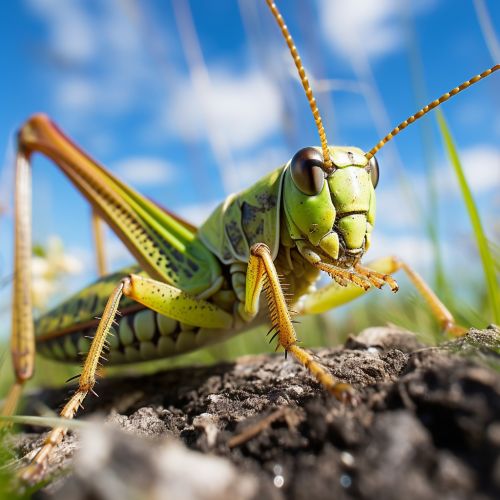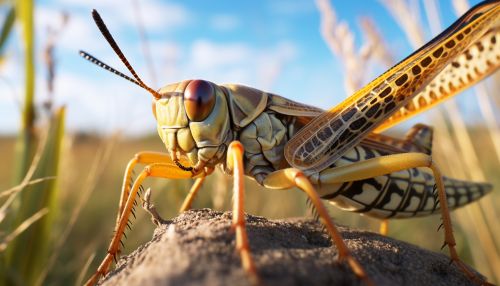Migratory Locust
Introduction
The Migratory Locust (Locusta migratoria) is a member of the grasshopper family Acrididae, and is considered one of the most widespread locust species in the world. This insect is known for its ability to form vast migratory swarms that can cause significant damage to agriculture.


Description
The Migratory Locust is a large insect, with adults typically measuring between 40 and 60 millimeters in length. It has a robust body, a large head, and long, powerful hind legs adapted for jumping. The coloration of this species can vary greatly, depending on its phase (solitary or gregarious) and age. Solitary individuals are typically brown or green, while gregarious individuals are often black with bright yellow markings.
Distribution and Habitat
The Migratory Locust is found in diverse habitats across Africa, Asia, Australia, and New Zealand. It prefers warm, tropical and subtropical climates and is commonly found in grasslands, agricultural fields, and other open areas. This species is highly adaptable and can survive in a wide range of environmental conditions.
Life Cycle
The life cycle of the Migratory Locust consists of three stages: egg, nymph, and adult. The female lays her eggs in a pod in the soil, and these eggs hatch into nymphs after a period of about 10 to 14 days. The nymphs, or hoppers, resemble small, wingless adults and undergo several molts before reaching adulthood. The entire life cycle typically takes about 40 to 60 days, depending on environmental conditions.
Behavior
The Migratory Locust is known for its gregarious behavior and its ability to form large migratory swarms. These swarms can contain billions of individuals and can cover large areas, causing significant damage to crops and other vegetation. The locusts are guided by the wind and can travel great distances in search of food. The formation of swarms is triggered by changes in population density and environmental conditions.
Impact on Agriculture
The Migratory Locust is considered a major agricultural pest due to its ability to form large swarms and its voracious appetite for crops. It can cause significant damage to agriculture, leading to food shortages and economic loss. Control measures include the use of pesticides, biological control agents, and habitat management strategies.
